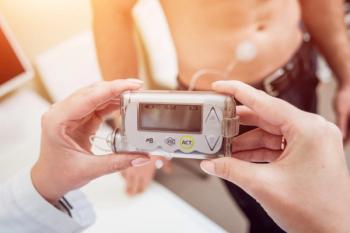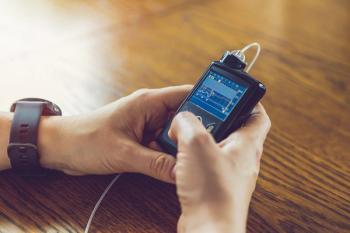
Q&A: Supporting Ongoing Insulin Use Through Pharmacy Counseling
Pharmacists play a key role in monitoring insulin use by addressing dosing, storage, and symptom management through regular, supportive patient check-ins.
Pharmacists are well-positioned to support patients beyond their first insulin prescription. By watching for signs of improper dosing, discussing storage and expiration, and asking simple yet important questions at each refill, pharmacists can ensure safe, effective insulin use and help patients build confidence in managing their diabetes.
Drug Topics® recently sat down with Susan Cornell, PharmD, CDCES, FAPhA, FADCES, experiential education specialist and professor emeritus at Midwestern University, to discuss red flags should pharmacists watch for that might indicate a patient’s insulin regimen needs adjustment or follow-up with their provider, and how pharmacists should assess and address whether a patient is experiencing hypoglycemia or hyperglycemia related to their insulin use.
READ MORE:
Drug Topics: What red flags should pharmacists watch for that might indicate a patient's insulin regimen needs adjustment or follow up with their provider?
Susan Cornell, PharmD, CDCES, FAPhA, FADCES: One of the biggest red flags is if you have a person with type 2 diabetes who is started on 10 units of a long acting basal insulin, and they're on 10 units 3 or 4 months later. Ten units is nothing, especially in type 2 diabetes. Most often, we have to titrate the insulin up, and so we usually start at 10 units, because it's very unlikely someone's going to have a hypoglycemic event when they go on 10 units of a basal insulin. In that case, we usually follow what I call the 3 2 1 rule. Every 3 days, you adjust by 2 units until the fasting glucose is 100. Nobody really does that or tells the patient to do that. As the pharmacist in the community setting, if I'm seeing that my patient is coming in and they're on 10 units, and they've been on 10 units for 3 months, I'm going to say, “Shouldn't you be increasing your dose?” That's where I'm going to start asking questions.
The other big red flag is if they are not picking up their insulin regularly. One of the other things that I neglected to mention on the counseling points is proper storage of the insulin product. We know that insulin goes into the refrigerator until it's going to be used. Unused insulin stays in the refrigerator and then it comes out when you're going to use it. Now, once you're using it, once you open the vial or the pen, there's an expiration date, not the expiration date on the pen or the vial, but anywhere from 2 weeks to 2 months, depending on the type of insulin. For example, if you're on insulin glargine, you can probably get 30 days out of it. If you have product left, it is not going to be effective, so it needs to be tossed and a new pen or a new vial needs to be opened. If you have a patient who's coming in who's on insulin glargine, and they're picking up their insulin every 2 months, my question is, are they using the insulin that's already expired? Making sure that the storage and the expiration is appropriate.
I can't tell you the number of times I see people do the opposite, where they store the open insulin in the refrigerator, and the unopened insulin is just outside on the kitchen counter or something like that. That happens a lot, and unfortunately it jeopardizes the integrity of the product.
Drug Topics: How should pharmacists assess and address whether a patient has experienced hypoglycemia or hyperglycemia related to their insulin use?
Cornell: Every time a patient picks up their insulin from the pharmacy, one of the things the pharmacist should do is go through the questions with them. “How's the insulin working for you? What was your blood glucose today?” These are some things that you can do to assess if they are getting the right dose. For example, if a patient comes in and I'm assessing how their diabetes is going, I might say, “What was your blood sugar today?” Let's say they tell me, “It was 250 this morning.” Okay, what does that mean to them? How frequently are they at 250? If it's frequently, that's telling me maybe something's not working. Maybe the person is not injecting correctly, because the number should be coming down. Are they getting the right dose? Is their technique appropriate? Switch that up, and maybe the patient says, “Well, today was 100, but yesterday it went down as low as 60.” Now you're starting to see it's dropping very low. How frequently does that happen? Is that happening just once in a while? When is it happening?
With long acting insulins, we don't tend to see hypoglycemia as much these days because they are very long acting. It's not impossible, but it's not likely. If it's a mealtime insulin and they take their mealtime insulin and they don't eat, they're going to be going low, or if they take their mealtime insulin and they don't eat enough carbohydrates to cover the insulin, or they took too much, didn't eat enough, didn't feel like eating. Suddenly they're going low because they didn't match their meal intake to what the insulin was covering. Just by asking [questions] the patient gets familiar with signs and symptoms of hypoglycemia.
How many times patients will say, “Well, I eat a candy bar.” Okay, well, tell me more about that. Is it a chocolate candy bar or is it just hard candies? Chocolate candy bar has fat in it, which is not an appropriate treatment for hypoglycemia. If they are having hard candies, like lifesavers or glucose tablets, that would actually treat it because it's pure sugar and it's going to be very fast acting. Making sure that the pharmacist is checking with the patient about what their sugars are, how frequently are they going low, if they know what it feels like, or what symptoms are they having, and then asking what they are doing to treat it.
READ MORE:
Ready to impress your pharmacy colleagues with the latest drug information, industry trends, and patient care tips? Sign up today for our
Newsletter
Pharmacy practice is always changing. Stay ahead of the curve with the Drug Topics newsletter and get the latest drug information, industry trends, and patient care tips.
























































































































